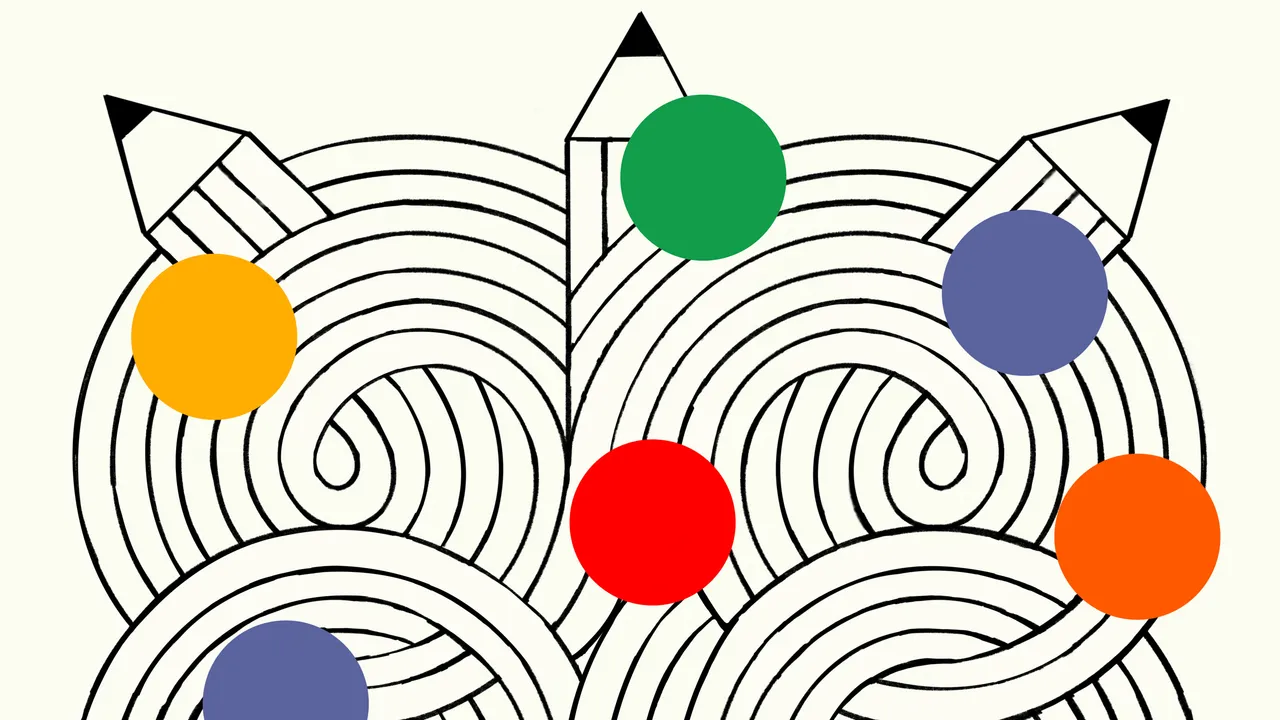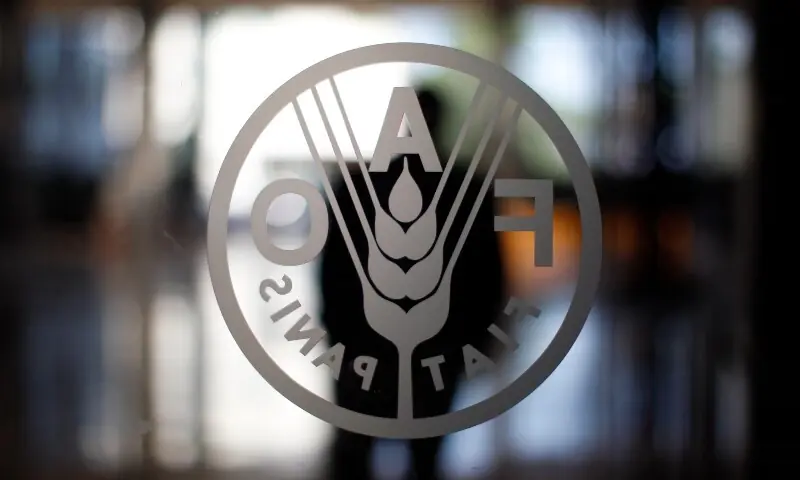
The first essay anybody writes is for school. Same here. But the only examples I remember are the ones I wrote at the end, in my A-level exams. One compared Hitler to Stalin. Another, Martin Luther King, Jr., to Malcolm X. I was proudest of the essay that considered whether the poet John Milton—pace William Blake—was “of the devil’s party without knowing it.” I did well on those standardized tests, but even passing was far from a foregone conclusion. I’d screwed up my mocks, the year before, smoking too much weed and studying rarely. Since then, I’d cleaned up my act—a bit—but was still overwhelmed by the task before me. My entire future rested on a few essays written in the school hall under a three-hour time constraint? Really? In the nineties, this was what we called “the meritocracy.” As a system of evaluation, it favored the bold and the brash, laid waste to the rest, and was irrelevant to the rich, whose schools drilled essay technique into the student body from Day One. In a school like mine, exams came as a surprise. Up to that point, we’d basically thought of school as a social event, a sort of mixer for a diverse group of teen-agers, many of whom had only recently arrived in the country—like a mini U.N., but with easier access to psychedelics. Almost half the school was felled at the first hurdle, leaving after G.C.S.E.s, aged just sixteen. (For G.C.S.E.s, you usually studied about nine subjects; for A-levels, only three.) Those of us who survived struggled on, trying to jump through meritocracy’s narrowing hoops. If you couldn’t do maths and had trouble with the hard sciences, each hoop came with an essay topic attached. (I did English, History, and Theatre Studies.) The stakes were presented as not just high but existential. You had to produce a thousand effective words on the rise of the Chartists—or else! What did “else” mean? Never earning more than minimum wage, never getting out of your mum’s flat, never “making something of yourself.” My anxiety about all this was paralyzing me.
Then something happened. An English teacher took me aside and drew a rectangle on a piece of paper, placed a shooting arrow on each corner of the rectangle, plus one halfway along the horizontal top line, and a final arrow, in the same position, down below. “Six points,” this teacher said. “Going clockwise, first arrow is the introduction, last arrow is the conclusion. Got that?” I got that. He continued, “Second arrow is you basically developing whatever you said in the intro. Third arrow is you either developing the point further or playing devil’s advocate. Fourth arrow, you’re starting to see the finish line, so start winding down, start summarizing. Fifth arrow, you’re one step closer to finished, so repeat the earlier stuff but with variations. Sixth arrow, you’re on the home straight: you’ve reached the conclusion. Bob’s your uncle. That’s really all there is to it.” I had the sense I was being let into this overworked teacher’s inner sanctum, that he had drawn this little six-arrowed rectangle himself, upon his own exam papers, long ago. “Oh, and remember to put the title of the essay in that box. That’ll keep you focussed.”
I was seventeen when this priceless piece of advice came my way. I’m now almost fifty, and although I don’t often draw out the rectangle anymore, this charming and simple blueprint is buried deep in my cerebral cortex, lit up like the flux capacitor in “Back to the Future.” I still use it. Still think about it every time I sit down to write one of these things you are reading right now. I continue to admire its impersonal and ruthless forward thrust. And, when I walked into those dreaded A-levels, that little doodle was the first thing I did, directly onto the desk, and with immediate results. My breathing slowed. I felt calm. Bob’s your uncle. What had seemed an impossible task transformed into a practical matter of six little arrows, radiating around a central concept. And arrows one and six were already settled! (I still write the opening and last lines of an essay first.) So now this is really just a four-arrow affair? In my experience, every kind of writing requires some kind of self-soothing Jedi mind trick, and, when it comes to essay composition, this rectangle is mine.
My next formative experience of “essaying” came in college. I remained a devotee of the impersonal rectangle method, but it was now 1994, I was coming of age at the end of history, and the personal was all that appeared to be left on the intellectual scene. Consequently, I pivoted, and my first essay for my English degree was an impassioned account of what literature had meant to me, as a young girl in London, during the eighties, a concept that I animated by turning all the writers who had been important to me—including the dead ones—into characters having dinner with me, who then commenced discussing all the ways their writing had affected me, Zadie, personally, and how I, specifically, felt about it. I was crazy about this essay. I ran across the quad and pushed it under my professor’s office door in the middle of the night. Two days later, it was returned with a solitary comment: This is not an essay.
I was crushed, but I shouldn’t have been surprised. As a response, it was perfectly representative of “The Cambridge Mind,” which was the title of a book I’d found in a junk shop and had purchased the summer before I “went up” to King’s College, in an attempt to comprehend what I would soon be dealing with. By the mid-nineties, the mind you were encouraged to develop, at King’s, was basically unchanged from the one students were expected to form in the mid-fifteen-hundreds. (The college was founded by Henry VI in 1441.) A discursive, objective, ironical, philosophical, elegant, rational mind. I was none of those things. I was expressive, messy, chaotic, and increasingly infuriated. A lot of my fury was directed at the university itself. The more I heard about the prior lives of my fellow-students, the more enraged I became. I hadn’t known that there existed schools from which a clear majority of the kids waltzed into the British equivalent of the Ivy League, year upon year, without fail. How could they all have “merited” it? And why did there seem to be so many Bertie Woosters and so few Alan Turings? I’d been told a different story: that, every year, two or three exceptionally bright kids out of a school of two thousand—or a whole village!—wrote the best essays and therefore went on to the best universities. (An immorality in and of itself, but at least comprehensible to the pathetic teen-age striver I was back then.) As it turned out, it was never really about the essays. This wasn’t about merit. The very few black and brown students, the small clusters of state-school kids, the even tinier smattering of working-class kids from outside London or the home counties—we were just the exceptions that proved the rule. My sudden and total exposure to this truth left me feeling demented. Impostor syndrome doesn’t begin to cover it. In my first year, I had a minor breakdown, and failed my exams simply by entering the room and writing . . . nothing. No essay on Gawain and his Green Knight. No essay on anything. I just sat there for three hours looking at the blank page, and then I left.
My whole college career might have gone that way. But, in my second year, exposure to a trio of great essayists changed the course of my life. One of them was my own professor Peter De Bolla, he of “This is not an essay.” The others were the two Tonys—Tanner and Judt—neither of whom I ever met. All three had been “Kingsmen,” but what all these men really had in common, in my mind, was class. Insofar as they came from a class that I almost recognized. Tony Tanner’s mother trained to be a teacher, and he went to the local grammar school. Tony Judt was the son of a hairdresser who grew up above the salon where both his parents worked. Pete, meanwhile, was the son of a man who left both home and school at nine and became a butcher. It did not seem a coincidence, to me, that all three wrote with anger and precision and wit about the role of literary culture within class systems. Their essays inspired me: literature was a living concern in their work, not an animated bourgeois dinner party. I read Judt on the political irresponsibility of Sartre, and Tanner on the sly political insights of Jane Austen. I listened to Pete on the role of the poor in the landscapes and the imaginations of the rich. I started thinking about my essays differently. It wasn’t about what Andrew Marvell meant to me, personally. It was about what Andrew Marvell’s “The Garden” revealed about the English attitude to land and capital. I developed a different sense of what an essay could be. I understood all three men to be “personal essayists” in the sense that they cared passionately about their subjects, but they themselves were rarely figures in any particular piece; their energies were directed elsewhere. And I followed their example, channelling my furies into coolly expressed explication, description, analysis. In the dissertation I wrote for my finals, I ended up literally following Pete’s lead, depicting as vividly as I could the economic structures and class hierarchies concealed within the design of an aristocratic English garden. (What does a ha-ha fence hide? The fact that the land has been worked by laborers.) But my tone? Controlled. Impersonal.
That tone, for better or worse, has stayed with me. I was trained to write like this, and I write like this. I just can’t bleed out onto the page as some people do, or use all caps or italics to express emotion, even when I know it’s what’s expected and that many people not only prefer it but see it as a sign of authenticity. The essay-writing habits of my school days have never left me. I find I still don’t want people to relate to what I’m saying in an essay, or even be moved by the way I say it. (With fiction, I feel the opposite.) I just want to think out loud about the things that matter most to me.
How can I tell what I think till I see what I say? That’s another Kingsman: E. M. Forster. I understand what he means, but in me the process is inverted. Because, in fact, I am usually immediately swayed by whatever intellectual fashion is in the air, and a first draft of any essay is more often than not a cynical and dutiful rehashing of the argument du jour. But, after an hour or so of that, I see what I have said and realize I don’t actually think any of that. I reread. I frown. Delete. I try again, this time allowing myself to think honestly, aloud, a process that will involve the various strands of my thought arguing with one another, as they inevitably tend to do. Full disclosure: these strands are drawn, essentially, from four big isms. Feminism, existentialism, socialism, and humanism. Only the first is still fashionable, and the last has been so debased, misused, and weaponized over the centuries as to be almost unspeakable in polite company. Still, these were the ideas that formed me as a teen-ager, and they linger on in the way I think and write. No matter what the topic in the rectangle may be, they lie in wait, nudging me, correcting me, reminding me of what it is I really think. What I actually believe.
In practice, they are like an annoying quad of parental figures, tutting if they spy me, for example, treating a living being as a means rather than an end—even rhetorically, even for a moment—or sighing dolefully when I use that totalizing term “the people,” which can obscure at least as much as it illuminates. They make every essay a battle. The existentialist who sits at my desk feels we are each individually thrown into the deep end of existence and tasked with swimming, and that this is a terrifying and heavy task. But both the socialist and the feminist are aware that not all bodies of water are created equal. (Some are crystalline, chlorinated pools surrounded by high fences. Some are swamps you wouldn’t want to dip a toe in.) The humanist, meanwhile, feels that if you’re going to insist on clean water for all, and on the justice of that demand, then you’ll probably need to explain why you make no exceptions to the word “all”—despite the very many differences between people, despite their separate histories and experiences—and to make this case in a language that is, at root, non-metaphysical. (A metaphysical and sacred language might do the job just as well, but, be warned, it’ll alienate the atheists.) Now, what’s all this about water? That’s the novelist within the essayist, who loves a metaphor and senses that a metaphor will tend to be more comprehensible to the general reader than a thousand pages of closely argued Thomas Piketty.
And I do write my essays for the general reader. They’re no more directed at the Bed-Stuy grad student in a polycule than at the overworked Delhi nurse or the rich Lagos lawyer. Though I’ve never wanted any reader (or anyone, really) to “relate” to me, exactly, I have always wanted to be “in relation,” which is different. We aren’t required to be like one another or even to like one another to be in relation. We just need to be willing to create and enter spaces in which solidarity is one of the possibilities. For many readers, of course, solidarity may still prove impossible. It may be impractical, unthinkable, a betrayal of their own systems of thought, or simply “cringe.” But I try to write in such a way that the possibility persists. That’s what the practice of essaying is, to me: a stumbling attempt to re-create, in language, a common space, one that is open to all. It’s in that optimistic spot that I set out my stall, yes, and my ideas and arguments such as they are, sure, but without demanding to see anyone’s identifying papers in the opening paragraph. Because that’s one thing I’ve learned, over the years. Sometimes, in order to create this more open space, you have to loosen your hold on your beloved isms.
If it were up to me, for example, I would very happily switch that rickety, always ill-fitting term “humanism” with something broader, more capacious. A bright, shiny neologism that would still place human flourishing at the center of our social and political processes, but which also encompassed the supremacy of all living things—including the natural world. As a philosophy, it would stand in pointed opposition to the current faith in the supremacy of machines, and of capital. Philoanimism? But the name is not good. (I’d be glad to hear alternative options!) It would be the work of many hands, this discourse, and it would understand that in these fractious times, although our commonalities may prove dispiritingly tiny or difficult to locate, they still exist. We’ve managed to locate them before, and not so long ago, using language as our compass. For example, the most inspiring (to me) political slogan of the past twenty years managed to create a common space in a single phrase: “the ninety-nine per cent.”
Sometimes the very act of seeking solidarity is characterized merely as the pursuit of “common ground,” a destination easily disparaged as a middling, nowhere, apolitical place. At other times, it is suspected of being a happy-clappy zone of magical thinking, where people have to pretend to be the same and to have experienced identical things in order to work together. I’d rather think of it as “the commons.” And when I sit down to essay I find it helpful to remind myself of the radical historical roots of that concept. I picture the blasted heath of the nineteenth century, a piece of open land that is about to be fenced in by the forces of capital, but upon which a large crowd has gathered, precisely to protest the coming enclosure. But not only that. A variety of overlapping causes are represented in that space, although they are all fundamentally concerned with freedom. Abolitionists, suffragists, trade unionists, working people, and the poor are present in abundance, alongside some land-reform radicals you might call socialist Christians, and, yes, O.K., a few old Chartists. Plus some anti-vaxxers, a smattering of Jacobites, and a couple of millenarians. (That’s the trouble with no fences: anybody can turn up.) Today, on the commons, all of these people have gathered to oppose a common enemy—the landowner—but disputation and debate are still everywhere, and you, the next speaker to get on the platform, must now decide how to address this huge crowd. You might have a very specific aim in mind: a particular argument, a singular cause, a deep desire to convert or sway. But you are not in your living room, your church, your meeting hall, or your corner of the internet. You are on a soapbox on the commons; anybody might be standing in front of you. Will you be so open and broad as to say not very much at all? Or so targeted that you are, practically speaking, talking to yourself? It’s complicated. Some rhetoric will definitely be necessary. You’ll need to warm them up before you lay it on ’em. And you can never forget that all around you is an explosion of alterity: people with their own unique histories, traumas, memories, hopes, fears. But this multiplicity needn’t shift your commitments—it may even intensify them.
Imagine, for example, an early-nineteenth-century lady abolitionist, standing in cold weather, listening to a labor activist. He is arguing for expanding the franchise from a propertied élite—male, of course—to all workingmen, but not once does he mention the vote for women. My imagined abolitionist grows colder—and angrier. But the gentleman’s blinkered position might also prompt her into a new form of solidarity, nudging her toward the realization that arguing for the mere “liberty” of the enslaved, as she does, is insufficient: her call, too, must include a demand for their full enfranchisement. The next time this lady abolitionist of mine steps onto the commons, she may find herself more willing to stand on her rectangular box and make the connection between many forms of disenfranchisement, which, though they may appear dissimilar, have their crucial points of continuity. After all, one thing workingmen, women, and almost all of the enslaved had in common, on the commons, was the fact that none of them could vote. (A point of convergence that Robert Wedderburn—essayist and preacher, and the son of an enslaved Jamaican woman—noted frequently.)
What kind of discourse can draw out such analogies while simultaneously acknowledging and preserving difference? (An enslaved man is not in the same situation as a laboring peasant.) What kind of language will model and leave open the possibility of solidarity, even if it is solidarity of the most pragmatic and temporal kind? The speaker will have to be open, clear, somewhat artful. They’ll have to be relatively succinct, making their argument in no more than, say, six sections. Their speech will be impassioned but expansive, and I think it helps a bit if it has a little elegance, enabling arguments to glide straight past the listener’s habitual defenses, although this gliding—like a duck crossing a pond—will usually involve a lot of frantic paddling down below, just out of sight. A complex performance, then. Because the crowd is complicated. Because life is complicated. Any essay that includes the line “It’s really very simple” is never going to be the essay for me. Nothing concerning human life is simple. Not aesthetics, not politics, not gender, not race, not history, not memory, not love.
“To essay” is, of course, to try. My version of trying involves expressing ideas in a mode open enough, I hope, that readers feel they are trying them out alongside me. While I try, I am also striving to remain engaged (and engaging) yet impersonal, because although the personal is certainly interesting and human and vivid, it also strikes me as somewhat narrow and private and partial. Consequently, the word “we” appears in my essays pretty frequently. This isn’t because I imagine I speak for many, or expect that my views might be applied to all, but because I’m looking for the sliver of ground where that “we” is applicable. Because once you find that sweet spot you can build upon it. It’s the existentialist at my desk who is best placed to find that spot. She says to herself: Almost all of the people I know (and I myself) have experienced pain. And absolutely all of the people I know (and I myself) will die.
These two facts, one almost total and the other universal, represent the firmest “we” I know, and have occupied my imagination since I was a teen. That was the moment when the fact that we were all death-facing and pain-adjacent first dawned, and seemed to make it perfectly obvious, for example, that the death penalty was a monstrosity, and prison usually a conceptual mistake, in which the most common crime was poverty. It was not until I got to college that I met people who, facing the same fundamental facts—pain, death—had come to what they considered to be perfectly reasonable but very different conclusions. I met people who believed in such a thing as “the criminal mentality.” I met people who thought poverty was primarily a sign of laziness or a lack of ambition. What once appeared simple turned complex. My beliefs remained, but the idea that they were or should be “perfectly obvious” to all—that’s what evaporated.
Aside from the fact that I never meant to be an essayist in the first place, one detail that has surprised me most during the past twenty years is that I have, in fact, written more personally in the essay form than I ever expected or intended. Still, as I look back on my “I,” across so many essays, I notice that the person typing out this “I” remains very hard to pin down, even for me. For starters, it’s never quite the same “I” who’s typing the word “I,” because of the way time works. Because of the way life is. I have been, for example, very single and very married. I’ve been poor, middle class, and wealthy. I’ve loved women, I’ve loved men, but loved no one for their gender specifically—it’s always been a consequence of who they were. Sometimes I’ve sat at my desk dressed like Joan Crawford. Other times, like someone who has come to fix your sink. I’ve sat there utterly childless and then very much full of child, or with a child in a Moses basket at my feet. I’ve been the mother of a British citizen and then the mother of an American. As a semi-public person, I’ve been the subject of various projections, and watched unrecognizable versions of “me” circulate in the digital sphere, far beyond my control. But I also remain who and what I have always been: a biracial black woman, born in the northwest corner of London, to a Jamaican mother and an English father. I personally feel like an outsider who belongs nowhere—and have never really minded this fact—but in the commons of my essays I understand that many or even most of my readers feel otherwise about this thorny matter of “belonging,” so I am often trying to write the kinds of sentences that remember this key fact, too.
If my own “I” remains a various thing—as I have written about too often—it is its very variousness that forces me to acknowledge the points of continuity: the fundamentals. What I honestly believe, as a human being. Every version of me is a pacifist. Every version believes that human life is sacred—despite the fact that the word “sacred” is most often used as a weapon in the arguments of conservatives, and remains basically inadmissible within the four isms that have done the most to form me. (But that’s a novelist for you. We can’t function on isms alone.) Every version of me knows that education, health care, housing, clean water, and sufficient food are rights and not privileges, and should be provided within a commons that is itself secured beyond the whims of the market. Yet to say these things is (in my view) really to say the bare minimum: it is almost saying nothing at all. The only significance of these beliefs, to me, when I am essaying, is that they are pretty much immovable, and whether I am reviewing a movie, describing a painting, arguing a point, or considering an idea, they represent the solid sides of my damn rectangle, no matter what the title in the center turns out to be. ♦



